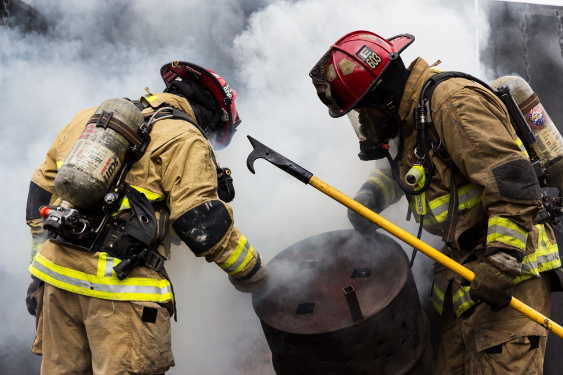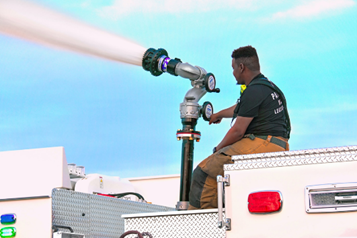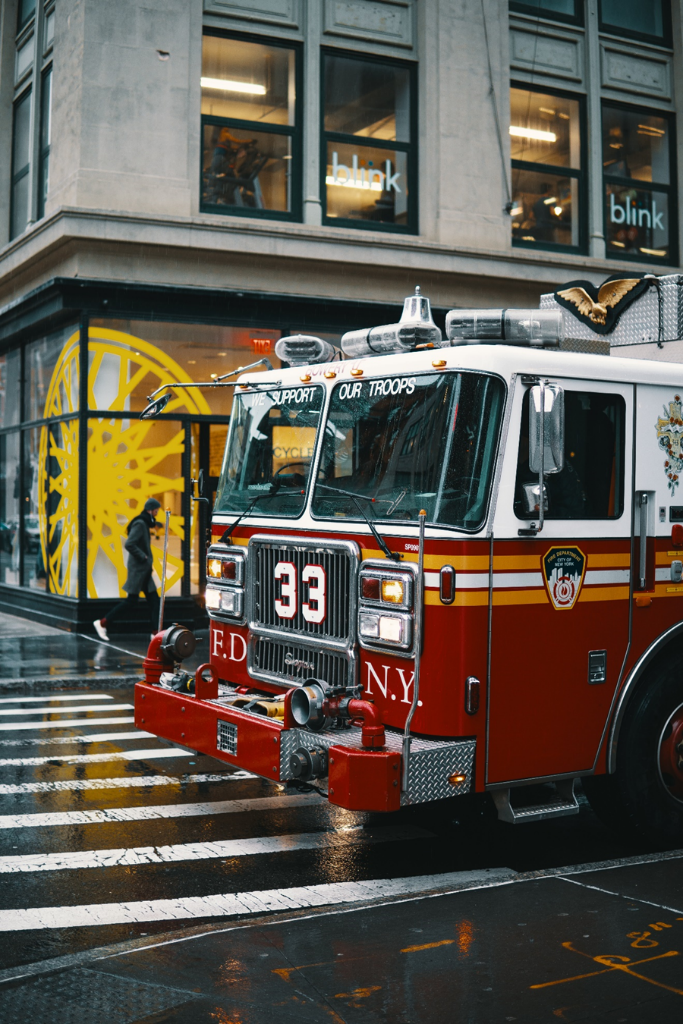Volunteer firefighters play a vital role in our communities, risking their lives to protect and save others. These courageous individuals volunteer countless hours of service often without reward or recognition.

On November 2, K12’s virtual field trip visits a local firehouse to explore a real fire station, meet volunteer firefighters, and discover the life-saving equipment they use. Students will hear heroic firefighters share their stories, demonstrate equipment, and answer all those burning questions about fire safety and community service.
In this blog post we will briefly explore some of the equipment used by firefighters and get a sneak-peek into the role they have in our communities.
What is a Volunteer Firefighter?
Volunteer firefighters are community heroes who selflessly dedicate their time to protect and save lives. They play a crucial role in our communities by responding to emergencies of all kinds such as fires, natural disasters, medical emergencies, water rescues, hazardous materials, and more.

The importance of volunteer firefighters cannot be overstated because they provide invaluable assistance during times of crisis and are active pillars in the community. Volunteer firefighters are especially important in areas where hiring full-time (or paid) firefighters is not an option, more common than not. According to The National Volunteer Fire Council (NVFC), most fire departments in the United States are volunteer: of the total 29,452 fire departments in the country, 18,873 are all volunteer;.
Roles and Responsibilities
Volunteer firefighters take on an assortment of roles and responsibilities within their communities. Their main duty is to respond to emergency calls, quickly assess situations, and extinguish fires. They also deliver support during natural disasters and help with rescuing people or animals trapped in hazardous situations. They may also leave their local community to help other firefighters and first responders in other towns, states, or even countries. Volunteer firefighters are also responsible for maintaining and inspecting firehouse equipment and ensuring its readiness for use. Most states require volunteer firefighters to meet the National Fire Protection Association’s Standards 1001: Firefighter Professional Qualifications. These brave individuals undergo rigorous training to become community heroes and are highly skilled in emergency response, first aid, and fire dynamics.
Life-Saving Equipment
Volunteer and career firefighters rely on a range of essential tools and equipment to combat fires, respond to emergencies, and save lives. From fire trucks to hoses to breathing apparatuses and protective gear, firefighters are equipped with everything they need to steer through dangerous situations. Along with extensive training, these tools and specialized equipment enable firefighters to swiftly respond to emergencies and provide critical support to people and communities.

Common Firehouse Tools
Fire Hose – a high-pressure hose that carries water to a fire. Fire hoses connect to a water source such as the fire engine, a fire hydrant, a portable pump, a building’s standpipe, or plumbing system. There are also different types of fire hoses for different emergencies such as a suction hose that can suck water out of ponds and rivers, a lightweight forestry hose used for outdoor fires, and attack hoses that are small and short, but can withstand high high-water pressure.

SCBA – Self-Contained Breathing Apparatus, is a device worn by firefighters that provides immediate breathable air. Like what a scuba-diver wears underwater for breathing, a SCBA is made up of a gas-storage cylinder, a pressure regulator, and a respiratory interface like a mask.
Halligan Bar –invented by former New York City Fire Department First Deputy Chief Hugh Halligan, a Halligan bar is a rod-shaped, forcible entry tool used to pry, twist, or strike. They are used by firefighters to quickly gain access and force open a door, clear rooms and windows, cut bolts, and more.

Jaws of Life – is a type of hydraulic rescue tool consisting of spreaders, cutters, and rams. The Jaws of Life can cut through cars, tear open vehicle doors, lift vehicles, and more. They are often used to assist in car accidents or if an individual is trapped in a small or metal space.
Fire Engine – also known as a fire truck, the fire engine transports the firefighters, equipment, and water to emergency scenes. Fire engines are equipped with loud sirens, a large water tank, hoses, ladders, and tools.
Volunteer firefighters use a wide range of tools and specialized equipment, and usually receive the same training as career firefighters. A typical American fire engine can have 100 or more tools just on the truck alone! To learn more about the life-saving equipment and see demonstrations register for K12’s virtual field trip Firehouse Adventures happening November 2, at 2:00 PM ET.
Training Requirements
To become a volunteer firefighter, individuals undergo extensive training to be best prepared for a variety of challenges they will face. The training includes learning about fire department operations, fire suppression techniques, and the proper use of firefighting equipment. Training also involves physical fitness and first-aid training. Training requirements will vary by state, but the commitment to ongoing learning and development is important for all firefighters to effectively protect their communities.

Benefits and Challenges

Volunteer firefighters face both benefits and challenges in their courageous role. According and the NVFC, some of the biggest challenges for volunteer firefighters are time demands, training requirements, and increased call volume. Although fighting fires and serving the community can be very rewarding, volunteer firefighters often juggle responsibilities of other jobs or family commitments.
As we wrap up the sneak peek into the important work of firefighters, it is difficult not to be awestruck by the bravery and selflessness that these heroes display every day. From rushing into burning, engulfed flames to helping rescue a cat stuck high in a tree, volunteer firefighters exhibit unparalleled commitment- all while balancing personal lives, families, and other professions.
This has just been a preview of the world of volunteer firefighters! Be sure to register for the upcoming virtual field trip to a real firehouse to hear amazing stories from firefighters, see them demonstrate equipment, and learn about fire safety from the best and bravest. We hope you can join us on November 2nd. Don’t forget to thank a hero today.




